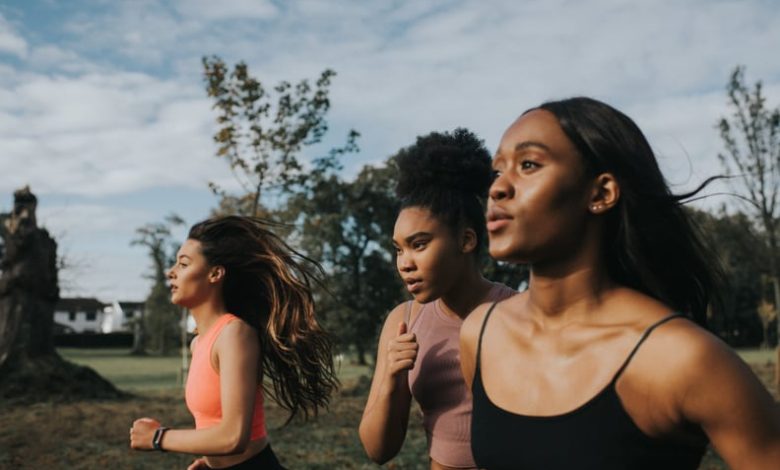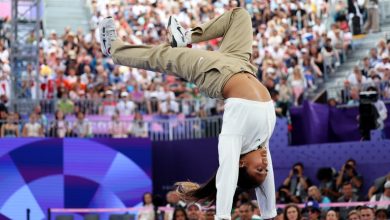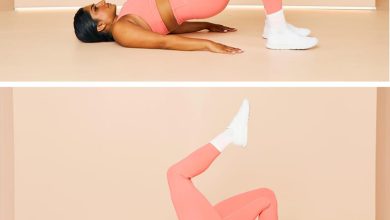How to Breathe While Running For Better Stamina and Performance

If your runs feel effortless some days but others leave you gasping for air, your breath might be the culprit. Although performance can also be affected by factors like diet, amount of sleep, and overall stress levels, learning how to breathe while running can make a major difference in your stamina and mindset.
With so much to focus on, your breath is one of the things that often falls to the wayside, especially for new runners, according to running coach Marci Braithwaite. To help you learn more about proper technique, we asked running coaches for their best running-specific breathing tips. Read on to see how to breathe more easily (as recommended by certified running coaches), and get a better sense of how breath relates to running in the first place.
Experts Featured in This Article:
Marci Braithwaite is an RRCA/USATF-certified fitness specialist and running coach.
Ashlee Green is an RRCA-certified running coach and co-founder of RUNGRL.
Amanda Katz is an RRCA-certified running coach and NASM-certified personal trainer.
Why Your Breath Matters
“I coach new runners, runners in larger bodies, and runners at the back-of-the-pack,” Braithwaite says. “New runners have so many things to consider as they get started, and effective breathing techniques are one of the harder skills to master,” she adds, noting that it’s important for runners to spend more time focusing on themselves so they can avoid common mistakes like running too fast.
“It is so important for runners to pay more attention to their own progress and not compare it to others,” Braithwaite explains. “Paying attention to their bodies’ needs is more important than speed.” It might seem simple enough, but as running coach Ashlee Green notes, improving your breathing takes real effort. “Similar to your form, breathing is something that requires intentional work to maintain,” she says.
How to Breathe While Running
“Practicing breathing can help make your runs feel easier and ultimately keep your lungs from feeling unnecessarily tired,” says running coach Amanda Katz. Still, she cautions new runners from obsessing over the exact frequency of their breath. “Doing your best to run at an effort where you could speak in full sentences is a great way to start.” Braithwaite adds that, for new runners, the best way to breathe while running is “whatever keeps you upright,” meaning whatever keeps you going. According to Green, there isn’t a single “best” way to breathe, but there are a few breathing techniques that may help you breathe easier while running.
Try Diaphragmatic Breathing
Your lungs are just slightly smaller than your rib cage, but most people only use the top third of this powerful organ. If you struggle to breathe while running, odds are, you might be breathing with your chest instead of your diaphragm, Katz says. Other common mistakes include shallow breathing and accidentally holding your breath, Green says. Diaphragmatic breathing (also known as belly breathing) involves inhaling deeply through the nose and exhaling through the mouth, utilizing the abdominal muscles to actively push air out. “Research suggests diaphragmatic breathing is best for taking in more air,” Katz says. Deep breathing can also increase blood oxygenation and improve your motivation, according to the University of Michigan Health.
In terms of technique, Harvard Medical School recommends inhaling through the nose and out through the mouth, placing one hand on the chest and the other on your stomach. As you breathe in, the belly should expand and your hand should rise, while the hand on your chest remains still. Exhale through pursed lips. Katz suggests trying diaphragmatic breathing lying down first, so you’re more prepared during your run. If you’re having a hard time using belly breathing on your runs, you may want to check your posture, ensuring that you’re not actively compressing your diaphragm. Cross-training with yoga and Pilates can help you practice diaphragmatic breathing, as can meditation.
Match Your Breathing to Your Steps
Once you have the basics down, try pairing your breath with your steps to find a rhythm that works for you. This technique is favored by Green because it “allows you to gamify your run a bit.” She notes that it’s also a great technique for pacing and mindfulness because you actually have to count. There are many different patterns to choose from, but it’s important to find what feels best for you.
“As runners start out, I tell them to focus on breathing in and out in an offset pattern with their steps. That means to breathe in for three steps, out for two, or a similar comfortable pattern,” Braithwaite says. “The goal is to land on a different foot each time you breathe in or out, so both feet receive an equal impact with the breath.” Katz agrees that breathing with your foot strike can be helpful. “Majority of runs should be done at a conversational effort. On these runs, try to inhale for three steps, exhale for three steps,” she says. A study from Science shows that many runners prefer a 2:1 rhythm (inhaling for two steps and exhaling for one), but you can adjust this framework depending on your specific pace and personal preference.
Consider Temperature
It’s good to breathe through your nose while running in colder weather because cold air is dry and the nose humidifies air more effectively than the mouth, per the American Lung Association. Avoid breathing through your mouth to protect your lungs, prevent irritants from entering your airways, and make your runs easier in the colder months. You may also consider adding a layer over your nose and mouth — like a scarf or bandana — to warm the air and calm your airways.
Is It Better to Breathe Through Your Nose or Mouth?
Considering that the nasal airways are so much smaller than the ones in the mouth, it might not feel natural to breathe through your nose at first. But research shows that, while you can still choose which airway to use while running, breathing through your nose may increase diaphragmatic function. It also suggests that this deep breathing can improve your overall running economy (aka, the amount of energy and oxygen you’re expending to run at a certain pace). Nasal breathing can even decrease your risk of upper respiratory tract infections because of the nose’s built-in filtration system, called cilia, and humidification.
That said, the specific airway you use does not seem to significantly impact your power output or performance. Given these findings, Katz agrees with Braithwaite, advising new runners not to stress if they find themselves breathing through the mouth. Katz says it’s better to focus on intentional diaphragmatic breathing and easy effort running. Green suggests experimenting with nasal and oral breathing, especially during different types of runs, in order to find out what works best for you.
The Bottom Line
“As an endurance activity, running relies on how well or not you’re able to focus on and control your breathing,” Green explains. “When you aren’t breathing effectively, other bodily systems have to work harder to overcompensate for the lack of oxygen that leads to fatigue more quickly and underperformance.” At the end of the day, it comes down to running economy. “Finding a rhythm, at a pace that is good for your current fitness level, helps you to develop a pattern to your breathing,” Braithwaite says. “This, in turn, allows your body to effectively use the oxygen you breathe, which helps you power through each run.”
While deep breathing can be advantageous for endurance and stamina, ensuring your muscles get the oxygen they need to function, research also suggests that specific breathing techniques may be most useful on a psychological level, helping people improve their exercise tolerance and curate a more positive mentality for better runs and good vibes all around.
— Additional reporting by Chandler Plante
Heather Dale is a former PS editor.
Chandler Plante is an assistant editor for PS Health & Fitness. Previously, she worked as an editorial assistant for People magazine and contributed to Ladygunn, Millie, and Bustle Digital Group. In her free time, she overshares on the internet, creating content about chronic illness, beauty, and disability.




